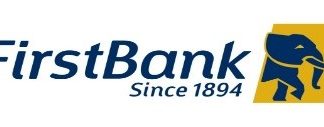Nigeria’s Manufacturing activities, measured by the Purchasing Managers’ Index, PMI, broadly jumped in the month of December 2017 to 68.7 from 60.1 percent, FBN Quest has revealed.
In its report released on Tuesday, December 2, FBN Quest, which first started the indexing in the country, stated that all five sub-indices rose in December: the highest was 73 (stocks of purchases). The headline reading has been above 50 since March.
According to FBN Quest, the principal driver for this has been the use of multiple forex windows by the Central Bank of Nigeria (CBN), which has transformed liquidity.
Manufacturers now have reliable access to forex provided that they are comfortable with the price. This is evident from the PMIs but also inflation data and listed company results.
This positive impact has gained momentum since July. Weekly turnover on the investors’ and exporters’ forex window (NAFEX) has risen to about $1 billion.
A more recent boost in both October and December has been the seasonal rise in demand for the year-end celebrations. The readings in December have been particularly strong although we should caution that a similar surge the previous year was followed by a sharp fall in January 2017.
“Manufacturing expanded by 2.6 percent q/q in Q3 2017. We can see the momentum of the improved forex availability in the growth of the two largest sub-sectors: food, beverages and tobacco (0.6%), and textiles, apparel and footwear (7.5%),” the report said.
FBN Quest said in the report that its partner, the NOI Polls, gathered and compiled the data. The index is found in developed markets (such as the ISM’s in the US), larger emerging markets such as China, India and Brazil, and a few other frontiers. It is based upon manufacturers’ responses to set questions on core variables in their businesses. In our case, it is not seasonally adjusted.
PMIs are forward-looking indicators of sentiment in all economies, and have the proven capacity to move financial markets in developed economies. To reinforce the point, the latest national accounts cover the third quarter (July-September) and the latest PMI the third month of the fourth.
“In the unweighted model of our choice (the ISM’s), respondents are asked whether output, employment, new orders, suppliers’ delivery times and stocks of purchases have improved on the previous month, are unchanged or have declined.
A headline reading of 50 is neutral. We have posted nine negative readings since our launch in April 2013, the latest in January 2017.
“Our sample is an accurate blend of large, medium-sized and small companies.
“We have added ‘trigger’ questions, which apply iwhen the respondent has the same answer on a sub-index for two months and then changes it for the third,” it said.














